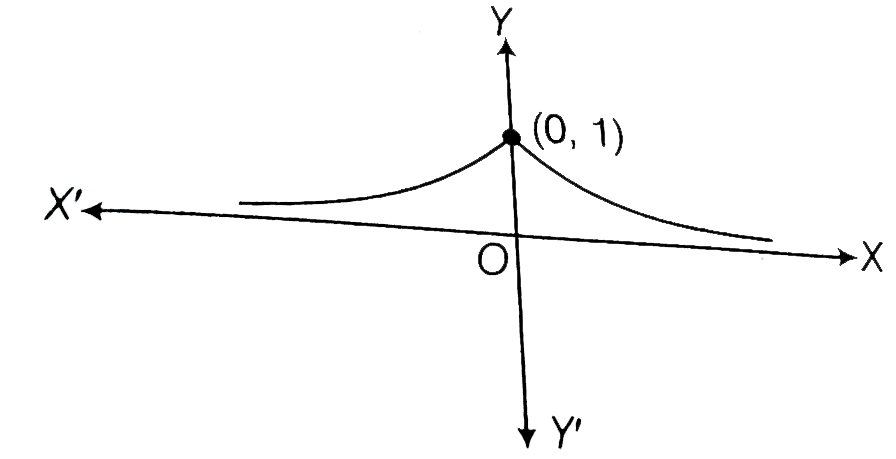Which of the following functions represents SHM
sin2ωt
sin2ωt
sin.ωt+cosωt
sinωt+cos2ωt
The correct Answer is:A, C
To determine which functions represent Simple Harmonic Motion (SHM), we need to analyze each given function based on the characteristics of SHM. Specifically, SHM is defined by the property that the acceleration is proportional to the displacement and directed towards the equilibrium position, which can be mathematically expressed as:
A=−k⋅x
where A is the acceleration, k is a constant, and x is the displacement.
Let’s analyze each option step by step.
Step 1: Analyze Function A - sin(2ωt)
1. Displacement: x=sin(2ωt)
2. Velocity: Differentiate x with respect to time t:
V=dxdt=2ωcos(2ωt)
3. Acceleration: Differentiate V with respect to time t:
A=dVdt=−4ω2sin(2ωt)
4. Relation between A and x:
A=−4ω2x
This shows that the acceleration is proportional to the displacement and directed towards the equilibrium position. Therefore, Function A represents SHM.
Step 2: Analyze Function B - sin(2ωt)
1. Displacement: x=sin(2ωt)
2. Velocity: Differentiate x:
V=2ωcos(2ωt)
3. Acceleration: Differentiate V:
A=−4ω2sin(2ωt)
4. Relation between A and x:
A=−4ω2x
However, since we have additional terms that do not relate directly to x, Function B does not represent SHM.
Step 3: Analyze Function C - sin(ωt)+cos(ωt)
1. Displacement: x=sin(ωt)+cos(ωt)
2. Velocity: Differentiate x:
V=ωcos(ωt)−ωsin(ωt)
3. Acceleration: Differentiate V:
A=−ω2(sin(ωt)+cos(ωt))
4. Relation between A and x:
A=−ω2x
This shows that the acceleration is proportional to the displacement and directed towards the equilibrium position. Therefore, Function C represents SHM.
Step 4: Analyze Function D - sin(ωt)+cos(2ωt)
1. Displacement: x=sin(ωt)+cos(2ωt)
2. Velocity: Differentiate x:
V=ωcos(ωt)−2ωsin(2ωt)
3. Acceleration: Differentiate V:
A=−ω2sin(ωt)−4ω2cos(2ωt)
4. Relation between A and x:
The terms in A do not relate directly to x, indicating that Function D does not represent SHM.
Conclusion
The functions that represent SHM are:
- Function A: sin(2ωt)
- Function C: sin(ωt)+cos(ωt)
2. Velocity: Differentiate x with respect to time t:
V=dxdt=2ωcos(2ωt)
3. Acceleration: Differentiate V with respect to time t:
A=dVdt=−4ω2sin(2ωt)
4. Relation between A and x:
A=−4ω2x
This shows that the acceleration is proportional to the displacement and directed towards the equilibrium position. Therefore, Function A represents SHM.
2. Velocity: Differentiate x:
V=2ωcos(2ωt)
3. Acceleration: Differentiate V:
A=−4ω2sin(2ωt)
4. Relation between A and x:
A=−4ω2x
However, since we have additional terms that do not relate directly to x, Function B does not represent SHM.
2. Velocity: Differentiate x:
V=ωcos(ωt)−ωsin(ωt)
3. Acceleration: Differentiate V:
A=−ω2(sin(ωt)+cos(ωt))
4. Relation between A and x:
A=−ω2x
This shows that the acceleration is proportional to the displacement and directed towards the equilibrium position. Therefore, Function C represents SHM.
2. Velocity: Differentiate x:
V=ωcos(ωt)−2ωsin(2ωt)
3. Acceleration: Differentiate V:
A=−ω2sin(ωt)−4ω2cos(2ωt)
4. Relation between A and x:
The terms in A do not relate directly to x, indicating that Function D does not represent SHM.
- Function A: sin(2ωt)
- Function C: sin(ωt)+cos(ωt)
Topper's Solved these Questions
- BOOK - PRADEEPCHAPTER - OSCILLATIONS AND WAVESEXERCISE - integer type question8videos
OSCILLATIONS AND WAVES
- BOOK - PRADEEPCHAPTER - OSCILLATIONS AND WAVESEXERCISE - Assertion-Reason Type Questions23videos
OSCILLATIONS AND WAVES
- BOOK - PRADEEPCHAPTER - OSCILLATIONS AND WAVESEXERCISE - Multiple Choice Question-II14videos
OSCILLATIONS AND WAVES
- BOOK - PRADEEPCHAPTER - MATHEMATICAL TOOLSEXERCISE - Fill in the blanks5videos
MATHEMATICAL TOOLS
- BOOK - PRADEEPCHAPTER - PHYSICAL WORLD AND MEASUREMENTEXERCISE - Competiton Focus Jee Medical Entrance18videos
PHYSICAL WORLD AND MEASUREMENT
Similar Questions
Knowledge Check
- Question 1 - Select One or More
Which of the following function represent SHM ?
Asin2ωtBsin2ωtCsinωt+2cosωtDsinωt+cos2ωt - Question 2 - Select One or More
Which of the following functions represent a stationary wave ? Here a,b and c are constants:
Ay=acos(bx)sin(ct)By=asin(bx)cos(ct)Cy=asin(bx+ct)Dy=asin(bx+ct)+asin(bx−ct) - Question 3 - Select One
Which of the following equations represent S.H.M. ?
Ay=2sin(ωt+30∘)By=2cos(ωt−30∘)Cy=2sinωt+3cosωtDy=2sinωt.cosωt
Which of the following function represent a travelling wave? Here a,b and c are constant.
View SolutionWhich of the following functions of time represent periodic motion ?
View SolutionWhich of the following expression respresents the electron probability function (D)?
View SolutionAccording to the first law of thermodynamics which of the following quantities represents change in a state function ?
View SolutionAccording to the first law of thermodynamics which of the following quantities represents change in a state function ?
View Solution


